The most famous diamonds : the Hope, the Golden Jubilee, the Pink Star.
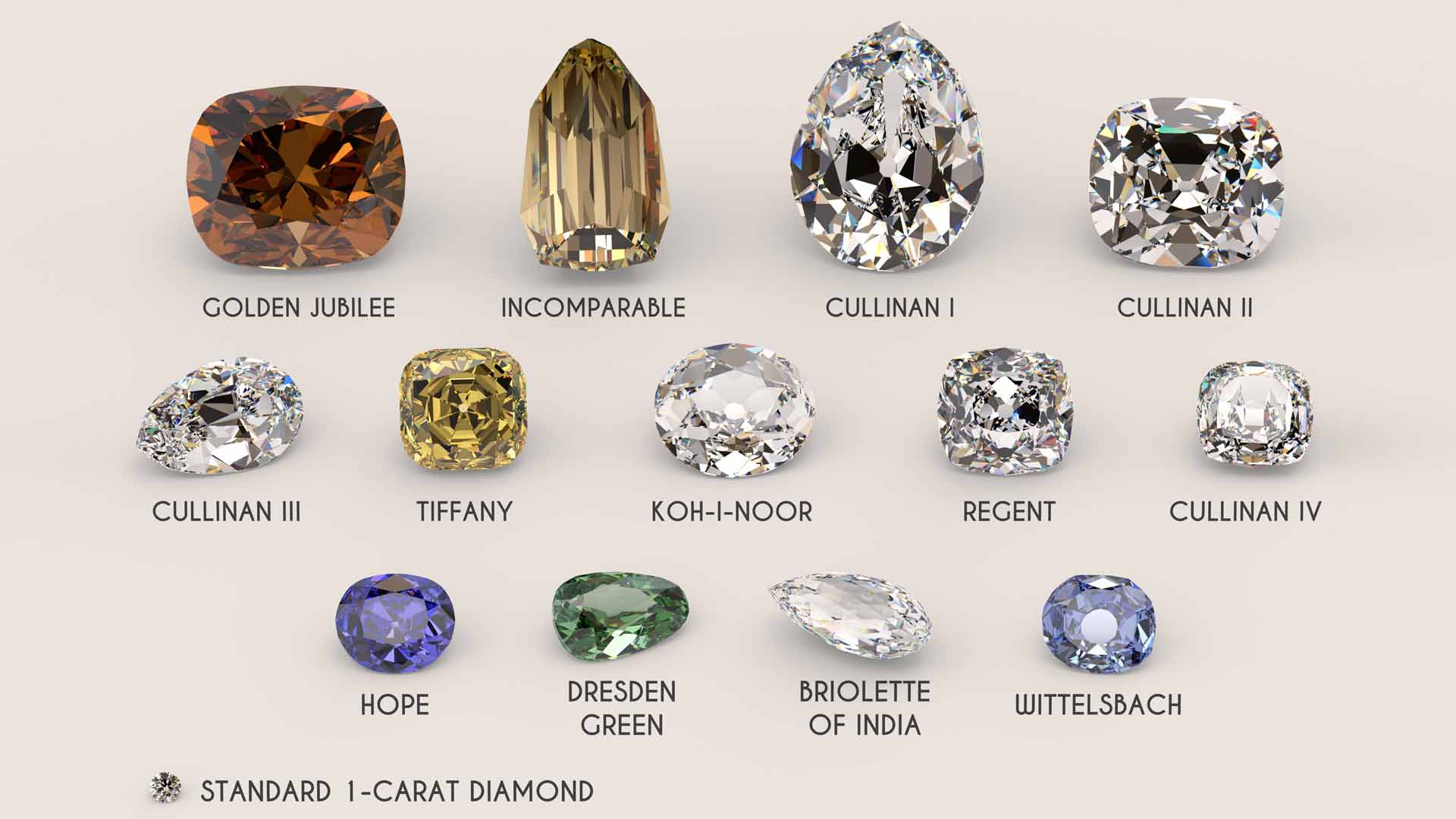
Captivating colors and unmatched brilliance, colored diamonds are the most prized stones on the planet. Each colored diamond is unique in the world. In their natural state, only 1 in 10,000 diamonds is a "fancy color" or colored diamond. Be careful not to confuse this: when we talk about white diamonds, the expression "diamond color" is used to define the shade of white on a grading scale of degrees of white that goes from colorless white (D) to strongly yellow-tinted white (M).
Colored diamonds, extremely rare, have always aroused much envy, been the source of plots, assassinations and many legends. They adorn the crowned heads of this world or belong to the richest businessmen. The world of diamonds is indeed a world of legends. And these legends are obviously supported by diamonds of exceptional size, those that are named, jealously guarded and sources of multiple myths. The most famous ones are not on the market. Every great state has them in its treasures, and in its prestigious museums. Here is a look at a fragment of the world's most precious treasures...
Most mythical colored diamonds
Deep blue-gray diamond, the "Hope
This diamond, also called the "Big Blue Diamond", originally weighed 112 carats. Today, after various recuts throughout its history, it weighs 45.52 carats. It is without doubt one of the most famous diamonds in the world.
In the 17th century it was called the "Tavernier Blue" because it was brought back from India by Jean Baptiste Tavernier in 1668 during his sixth and last voyage. Acquired in 1669 by King Louis XIV as a French crown jewel, it was cut by Jean Pittan in 1672 in the shape of a heart, to 69 carats: it changed its name and became the "Bleu de France". This extraordinary stone had a terrifying reputation: it brought bad luck to all those who owned it, except the Sun King who survived 46 years after its purchase. But Tavernier died ruined, eaten by dogs and Louis XVI and Marie-Antoinette, the last French owners, died as we know, guillotined.
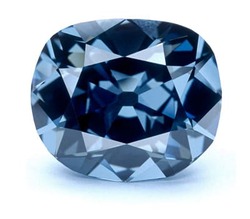
In 1792, the diamond disappeared during the theft of the Garde-meuble national and reappeared in 1824 at an auction in London. It was renamed "Hope" after being sold to the Hope family, wealthy bankers: it was also cut into a cushion shape and brought down to 45.52 carats. All of them had very tragic fates, between ruin and premature death, which reinforced the title of curse of the Hope diamond. The rest of the diamond's history is a series of legends in which it is difficult to be certain of the facts. Apparently, it passed from hand to hand, was bought by a Greek, then by a Turk, then by Cartier.
In 1947, it was the famous jeweler Harry Winston who bought it to offer it in 1958 to the city of Washington, where it is still visible in the windows of the Smithsonian Institute of Washington. It is estimated and insured at $350 million and certified by the GIA as "Fancy Dark Grayish Blue" in color and VS1 in clarity.
This priceless gem is the second most visited art object in the world, just after the Mona Lisa exhibited in the Louvre in Paris. It is said that this exceptional diamond may have inspired the "Heart of the Ocean" which appears in the movie Titanic and bears a striking resemblance to the blue diamond in the French Crown...
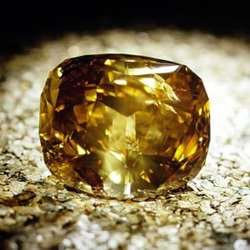
Yellow Brown Diamond, the "Golden Jubilee
It is currently the largest known cut diamond in the world! Of a yellow-brown color, it was discovered in 1985 in the Premier mine in South Africa, as was the Cullinan. The rough stone was initially 755 carats, then was cut by Gabi Tolkowsky and its weight then increased to 545.67 carats. It is also the record for minimal loss after cutting and polishing. Its cut is unconventional: the cutter called it a "fire rose cushion", with its 148 facets.
In 1997, the Thai Diamond Manufacturers Association presented it to King Rama IX of Thailand as a gift to celebrate his 50th birthday. It can be seen today at the Royal Thai Palace in Bangkok, in the throne room of the golden temple of Pimammek.
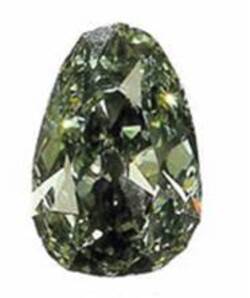
The "Dresden Green" Diamond
Reaching 41 carats, it is the largest green diamond in the world. It owes its name to the capital of Saxony in Germany, Dresden, where it has been displayed for over 200 years in the "Green Vault".
Probably originating from the Golconde mines in India, its history is unknown. It is only from the 17th century that we find its trace: in 1742, it is bought 400 000 thalers by King Frederick-Augustus II, Elector of Saxony.
The stone is of Type IIa, which means that it is chemically pure. Only 1% of diamonds are of this quality. When it was offered for sale at Christie's in Geneva in 2014, its price reached $8,781,637 which clearly reveals the enthusiasm of buyers for these rare and storied colored diamonds.
Colored diamonds at record prices
Some diamonds discovered more recently or acquired more discreetly, still push the limits of the preciousness...
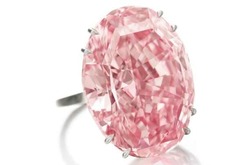
The Pink Diamond, "Pink Star
The Pink Star is a diamond weighing 59.60 carats, classified in color as Fancy Vivid Pink by the GIA (Gemological Institute of America). The Pink Star was discovered in a mine in South Africa in 1999 and weighed 132.5 carats in the rough.
The Pink Star is the largest known diamond to have been graded Vivid Pink. Because of this exceptional rarity, 2 years of work were necessary to cut and reveal all the lights of this pink giant. It was unveiled in Monaco on May 29, 2003 in a public ceremony.
In April 2017, the 59.60 carats of this pink diamond raised its auction price to 71.2 million US dollars. The lucky owner is the Chinese jewelry company Chow Tai Fook.
The Red Diamond, the "Moussaief"
The Moussaieff red diamond is a 5.11 carat diamond of triangular brilliant cut (sometimes called trillion or trilliant) classified as "Fancy Red" by the GIA (Gemological Institute of America). It is the largest known red diamond in the world and the rarest of all.
This diamond was discovered in the 1990s by a Brazilian farmer in the Abaetezinho River, in an area known as Alto Paranaiba. The rough stone weighed 13.9 carats. The London-based Israeli jeweler Moussaief has held it since 2001.
It is estimated to be worth $7-8 million and was featured in the Smithsonian Institution's "The Splendor of Diamonds" exhibition in 2003, along with the De Beers Millennium Star and the Heart of Eternity.
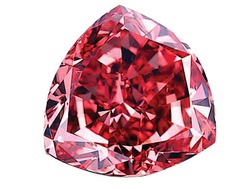
How does a red diamond get its extremely rare hue among colored diamonds?
While nitrogen or boron is responsible for most other diamond colors, it is different for red diamonds. Like colorless (white) diamonds, red diamonds are made of pure carbon. Thus, instead of the presence of impurities, it is a deformation in the atomic composition of the stone that produces the red color. This structural flaw is called plastic deformation and causes light to pass through the lattice and bend to reflect the beautiful ruby hue. As with any colored stone, the more intense the hue, the rarer and more valuable it is. The intensity can range from a deep pink diamond to a purplish red.
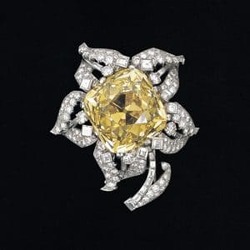
The yellow diamond, the "Allnat
The Allnatt is a cushion yellow diamond of the most sought after intensity: Fancy Vivid Yellow. It weighs 101.29 carats and has a cushion cut. This diamond is named after one of its owners, Major Alfred Ernest Allnatt, soldier, sportsman, patron and benefactor.
The origins of the Allnatt are unknown until Major Allnatt purchased the diamond in the early 1950s. After purchasing the diamond, he commissioned Cartier to set it. The final creation was a platinum flower with five petals, a stem and two leaves, all set with diamonds. The Allnatt was sold at auction in May 1996 by Christie's in Geneva for $3 million.
The history of mankind has not finished hearing about colored diamonds... To better understand what makes the classification and price of these exceptional stones, we invite you to discover our technical page on colored diamonds. And to understand the origin of these diamonds, you can also read our article on the difference between a natural or artificial color diamond.
De Hantsetters, diamonteers since 1888
Customer service at your service, provided by diamond dealers
All our diamonds are independently certified by 3 world-renowed organisations



Want to talk to a diamonteer ?
Contact us now